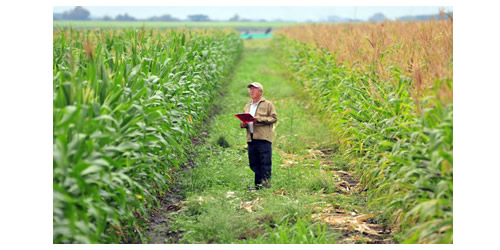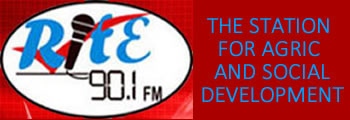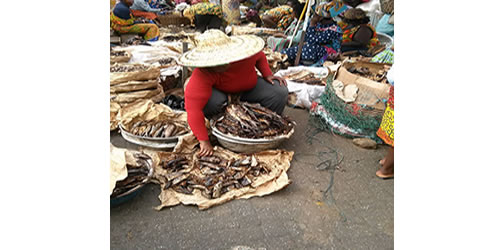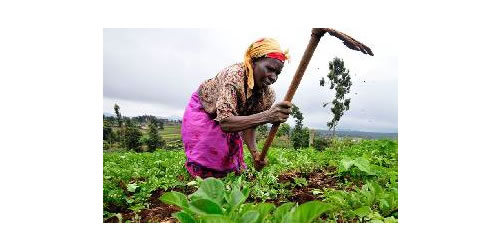GMOs take root as a controversial answer to hunger in Africa

For some experts, genetically modified organisms are the answer to Africa’s harsh climate and low agricultural productivity. But for critics, dependence on powerful seed companies outweighs the benefits.
The promise of genetically modified organisms (GMOs) is a tempting one for African countries. Extreme weather conditions and rapidly growing demand place African farmers under great pressure to increase productivity.
So it is not hard to see how a variety of drought and insect resistant maize may seem like a miracle solution for food security in developing countries.
Africa depends heavily on food aid and imports. The continent spends an average of $35 billion on food products from developed countries every year, despite the fact that almost three quarters of its population are farmers.
With a population set to double to 2.4 billion by 2050, ending this dependence has become of crucial importance.
Many see GMOs as an indispensable tool to confront the challenge of providing food security for Africa. This approach is backed by the United States, which produces around 40% of the world’s GM crops.
The public-private partnership Water Efficient Maize for Africa (WEMA) aims to develop varieties of the crop that can withstand both droughts and attack by insects. One variety, produced by American seed company Monsanto, is due to be planted in South Africa from 2017.
The objective is simple: to make crops more durable in drought-afflicted countries and boost productivity by 20 to 30%, according to estimates.
“GMOs are overwhelmingly presented as innovations to fight hunger in sub-Saharan Africa. But their main purpose is to open new markets for the big international seed companies, who see Africa as a future market,” warned Clara Jamart, food security advocacy officer for Oxfam France.
Critics say that the expensive, patented GMO seeds will do nothing to solve the problem of agricultural productivity in sub-Saharan Africa, where 90% of farms are small family businesses. Moreover, the effects on human health and biodiversity remain an unknown factor and a cause for concern.
Moving ahead
While GM crops are authorised in only a handful of African countries today, they appear to be gaining in popularity.
South Africa, Burkina Faso and Sudan are the only three African countries that currently commercialise genetically modified crops. Egypt, once a member of this small group, abandoned GMOs in 2013.
Genetically modified crops still account for a very small proportion of African agriculture. In Sudan, for example, only around 100,000 hectares are planted with GMOs, according to the International Service for the Acquisition of Agri-biotech Applications (ISAAA). This represents a tiny fraction of the country’s arable farmland.
But GMOs are gradually becoming more widespread, and Cameroon, Ghana, Kenya, Malawi, Nigeria, Uganda and Egypt have recently carried out field tests.
Some have even gone further. Kenya’s president announced last month that he planned to end the country’s moratorium on GMO imports, in place since 2012.
According to Clara Jamart, “a certain number of African leaders are convinced that GMOs are the answer for development in Africa’s agricultural sector”.
This new enthusiasm for GMOs is strongly encouraged by the New Alliance for Food Security and Nutrition (NASAN), an organisation launched by the G8 in 2012 to promote the adoption, distribution and consumption of bio-fortified foods in developing countries. Its objective is to fight malnutrition by improving the nutritional value of foods.
In a report entitled Hunger, just another business, the NGOs CCFD-Terre Solidaire, Oxfam France and Action Against Hunger stated that “Some of NASAN’s partner countries, like Nigeria, are already modifying their legal frameworks to authorise the planting of GMOs.”
An estimated 3.7% of all agricultural land and 13% of arable farmland is covered by genetically modified crops, according to the International Service for the Acquisition of Agri-biotech Applications (ISAAA). This means 87% of the world’s arable farmland is GMO free.
The ISAAA also reported that 18 million farmers produced GM crops in 2013. This represents around 1% of the farmers in the world.
The United States is the world’s biggest producer of GMOs, followed by the big emerging economies of Brazil, India, Argentina and China.
Although authorised in Europe, the cultivation of GMOs on the continent is not widespread. In some countries, like France, it is forbidden altogether.
In Africa, only a handful of countries grow genetically modified crops (mainly cotton and maize).
Source: euractiv.com




